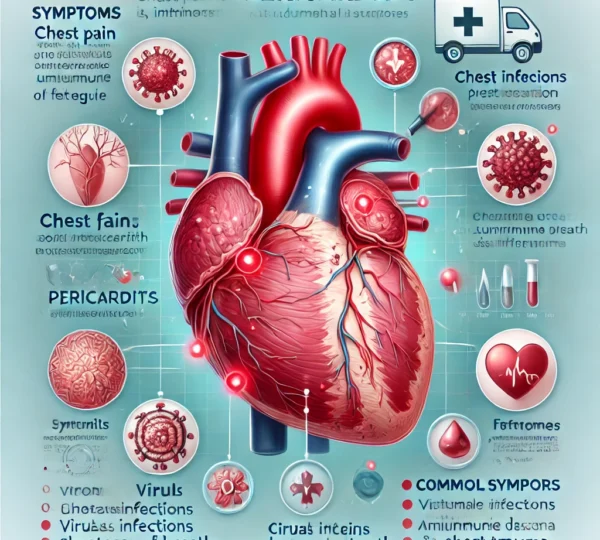Pericarditis: Painful inflammation of the heart’s lining.
Pericarditis is a condition where the pericardium, the sac surrounding your heart, becomes inflamed. This inflammation often causes symptoms such as chest pain, a tight feeling in the chest, and difficulty with breathing.
Common Causes of Pericarditis
Pericarditis is relatively common and affects around 200,000 people in the United States each year. Here are some of the main causes:
- Viral infections: The most common cause of pericarditis.
- Bacterial infections: Less common but still a risk factor.
- Autoimmune diseases: Conditions like lupus can trigger pericardial inflammation.
- Chest trauma: Injury or accidents may lead to pericarditis.
- Heart surgery: Some people develop pericarditis after heart surgery.
Key Symptoms of Pericarditis
The main symptom of pericarditis is chest pain, which can feel sharp or stabbing. Other signs include:
- Shortness of breath, especially when lying down
- Fever and chills
- Fatigue and weakness
- Nausea or a feeling of dizziness
How Pericarditis is Diagnosed
Doctors use several tests to diagnose pericarditis:
- Electrocardiogram (ECG): Checks heart activity.
- Echocardiogram: Uses sound waves to show the heart’s structure.
Treatment Options for Pericarditis
Pericarditis often improves within a few weeks. Treatments include:
- Medications: Anti-inflammatory drugs or corticosteroids to relieve pain.
- Rest: Avoid strenuous activity during recovery.
Conclusion: Managing Pericarditis for Better Health
Most cases of pericarditis clear up without serious complications. However, if you have chest pain or other symptoms, it’s essential to consult a doctor. With proper care, pericarditis can be managed, allowing for a full recovery.
For More Information Click here



